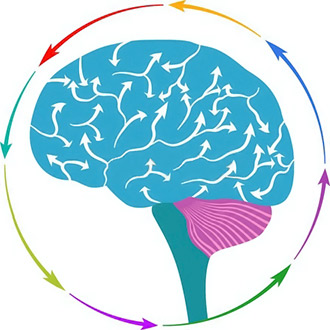Even if you consider yourself terrible at directions (that would make us kindred spirits…), the ability of your brain to know where it is in space and ‘which way to go’ is actually pretty incredible. It seems that all of us have a type of innate ‘GPS’ that helps us to get around and recent research has shined some light on how this works… which makes for some pretty fascinating reading…
Introducing Place Cells and Grid Cells
Our brains contain a number of specific cells related to physical position called ‘place cells’ and ‘grid cells’. These grid cells have been found and examined in mice studies which help them to find their way around mazes (1).
 Grid cells exist in the hippocampi of mice, specifically in a region called the entorhinal cortex and which fire as the mice traverse specific regions of space. Researchers attached sensors to the neurons of rats and found that their brains formed an almost perfectly hexagonal network of place cells in the brain, mapping the space they explored. Most interestingly of all, it is actually possible to work out the physical dimensions and routes of the space simply by examining the layout and orientation of the cells in relation to one another.
Grid cells exist in the hippocampi of mice, specifically in a region called the entorhinal cortex and which fire as the mice traverse specific regions of space. Researchers attached sensors to the neurons of rats and found that their brains formed an almost perfectly hexagonal network of place cells in the brain, mapping the space they explored. Most interestingly of all, it is actually possible to work out the physical dimensions and routes of the space simply by examining the layout and orientation of the cells in relation to one another.
Why hexagons? That’s because hexagons (made from triangles) are the most efficient shapes for fitting the maximum amount of map into the minimum amount of space. The studies were repeated several times and always produced the same results. Grid cells ’tile’ environments and are used repeatedly for learning new locations.
Implications for Human GPS
It appears that grid cells fire when mice – and probably humans – are placed in new locations in order to begin forming a cognitive map, whereas place cells provide storage for long term spaces that we come to recognize. Grid cells ’tile’ new locations using a highly efficient universal code for mapping environments and this information is then ‘saved’ to the place cells for us to access later. It is also thought that place cells are used to locate ‘points of interest’ such as restaurants or friends’ homes on the grid maps – almost like adding pins to Google Maps.
It’s thought that grid cells form within weeks of our birth and develop as we explore new environments. As the entorhinal cortex is one of the first areas to be affected by Alzheimer’s, it’s also thought that this might be the reason that sufferers often get lost or forget where they’ve been.
While the media are calling this ‘the brain’s GPS’, the reality is actually closer to a simple mapping system. Rather than demonstrating any innate sense of heading, it seems our brain instead relies on the creation of a map and fixed points as reference.
The researchers who discovered these grid cells, May-Britt Moser and Edvard Moser, recently won the Nobel Prize for their efforts and are now looking into how the brain goes about mapping three dimensional spaces.



